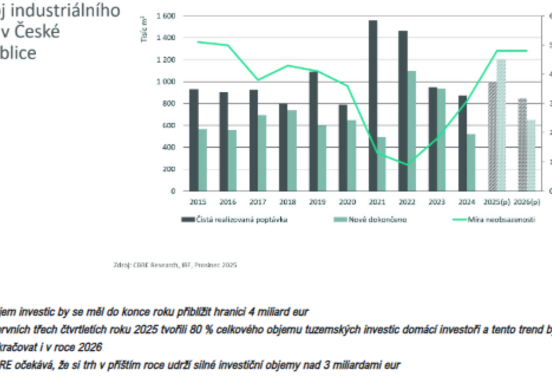The survey confirmed that hybrid work has become the new norm in office fields, which primarily include business services, IT and the financial sector. Fully 73% of respondents within it claim that their organizations consider the currently established work model to be the optimal solution. Although this is an increase of 18 percentage points year-on-year, many organizations are trying to take various measures to get employees back to the office. However, the survey data shows that this is not a simple process. Among companies trying to encourage employees to return to the office, there is a growing number of those encountering employee reluctance; this share increased year-on-year from 66% to 79%.
"For employees, the hybrid work model has become a fixed part of their everyday life. Organizations should therefore focus on adapting their activities rather than trying to return to traditional solutions," says Jana Vlková, director of Office Agency and Workplace Advisory at Colliers, adding: "Regardless of whether employees work remotely one, three or even five days a week, companies must change the way they operate and adapt it to the new reality. Otherwise, they risk losing interest on the part of employees and job seekers. Our data shows that job advertisements from organizations with a hybrid work model and flexibility up to 7 times more applicants respond than to advertisements offering work from the corporate office."
Advantages and disadvantages
At the same time, the survey data shows that over the past 12 months there has been a significant improvement in the assessment of the impact of remote work on employees' work-life balance. The majority of organizations surveyed (65%) estimate that remote work has a very positive or positive effect in this regard. The involvement of employees in team activities, both work and social, also increased significantly year-on-year (from 46% to 64%, or from 29% to 46%). However, the results of the study also show that working from home also has its disadvantages. A full 70% of respondents identified a reduction in employees' sense of belonging to the team as one of the negative consequences of remote work. A deterioration in the flow of information within and between teams at the operational level was noted by 52% of respondents, and 48% said that remote work negatively affects collaboration in the company.
Mapping and diagnostics
"So that companies can better identify the problems and challenges of their hybrid work model and can respond to them in a timely and efficient manner, they can use our new tool, which we have called the hybrid barometer," Jana Vlková explains, adding that this tool enables the quick collection of the most important information regarding with key
aspects of the functioning of distributed teams, such as information exchange, feelings of team unity and coordination of activities. Thanks to this, organizations can quickly identify potential risks and find out which teams cope effectively with the hybrid work model and which, on the contrary, need additional support.
Education components
The hybrid work model presents a challenge for company management not only due to the need to adapt work logistics and the tools and technologies used, but also in connection with the introduction of effective management methods and the development of key management skills. In addition to the numerous benefits of flexibility, there are also possible consequences to consider, such as a loss of sense of belonging, barriers to communication and the risk of burnout. "A modern leader must be able to prevent all this. He should engage employees in dialogue, monitor risk indicators and be prepared to make rapid changes in response to identified issues. In an era of dizzying changes in working models, the key to success is the ability to recognize trends and adapt to them," concludes Jana Vlková, adding that the topics will also be discussed in detail at the ABSL expert conference, which takes place on 1-2 November in Brno.







